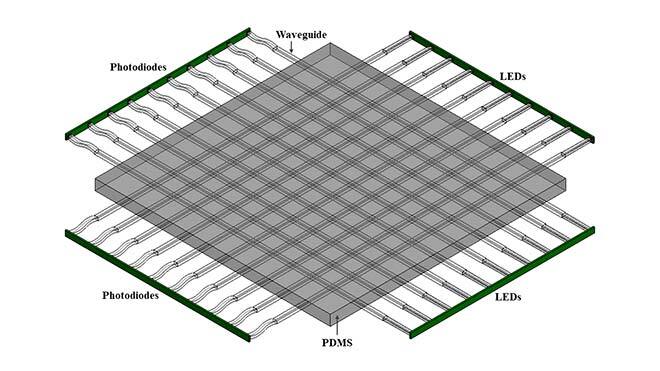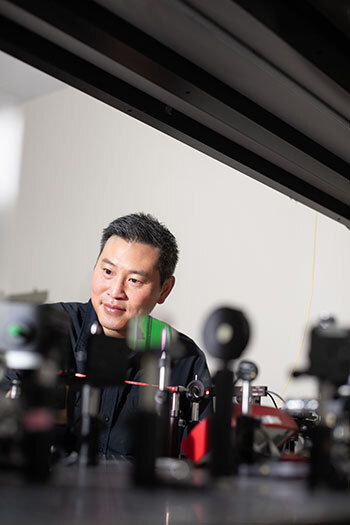Photonic Optics in Support of Healthcare

Purchased on Istockphoto.com. Copyright.
Getting closer to humans is a goal of electrical engineering Professor Bora Ung, who recently took over the Marcelle-Gauvreau Engineering Research Chair in Multimaterial and Multifunctional Photonic Devices. His work allows him to think outside the box and design a new generation of sensors and fibre optics used in healthcare and for the environment.
Is it possible to design optical sensors capable of measuring the concentration of different pollutants in the air? Can we use photonics to detect the presence of pathogens in the body? How can fibre optics help us better understand the impacts of a spinal cord injury? These are just a few of the research questions that Bora Ung and his team are addressing, the answers to which could have important social implications.
A ÉTS professor since 2014, Bora Ung explains that the institution has developed “expertise in the design of special optical fibres and the implementation of photonic devices that use them.” This breakthrough will increase bandwidth and the security of communication networks. Yet for the past three years, Bora Ung has decided to explore fields related to telecommunications to diversify and have more impact on society, working on new optical sensors for biochemical compounds.
Beyond the field of expertise, the entire technology needs to be reviewed in order to make it more available to the general public. “We quickly realized that the instruments we were using were not always optimized for daily interaction with the human body,” he explains. In the context of a laboratory environment, that’s fine. But if you want to develop personalized health applications, for example, it’s either too expensive, too bulky or too fragile.” Professor Ung is therefore working on new fibre-optic platforms better adapted to this reality and less costly.

Waveguide
Science, Art, and Multidisciplinarity

Bora Ung, professor in the Electrical Engineering Department at ÉTS
Professor Ung especially likes working on projects that border on several fields of expertise, and he is also involved in the INTRIGO Collective. The work of this group of university researchers combines quantum mechanics, blockchain and… Art! It’s not surprising that one of the aspects he enjoys most about research is the contact “with students, trainees, postdoctoral researchers, and also colleagues from different backgrounds, from other departments or universities.
His association with the arts proves that it is possible in research to break down silos … and think outside the box—just like his research in human health. It’s the perfect job for Bora Ung who defines himself as ‘curious by nature’ and who contributed to the publication of some 40 scientific papers and lectures, in addition to being involved in various research groups.
However, there are challenges to understanding each other. For example, in the arts, we don’t use the same language or the same words. But it’s truly rewarding, and that goes as much for me as for the students.”
He says it is a joy and a privilege to follow their journey. Bora Ung advises them to believe in themselves, to develop a career plan and to “follow it with conviction.” And to know how to surround themselves with colleagues who will stimulate their minds and help them go further. “Today, research is conducted in an interdisciplinary, multidisciplinary manner.” A formula that can increase the impact tenfold!



